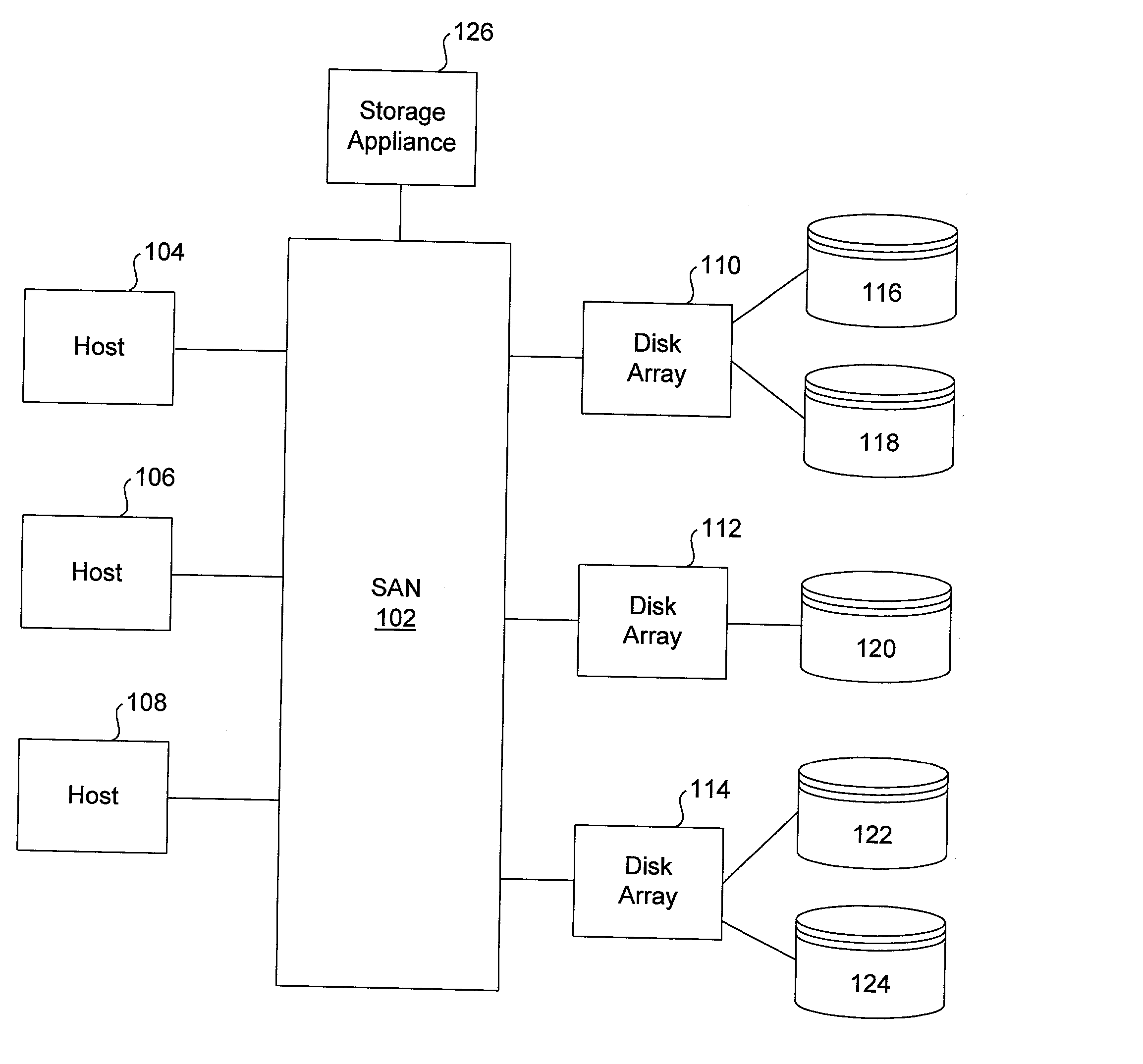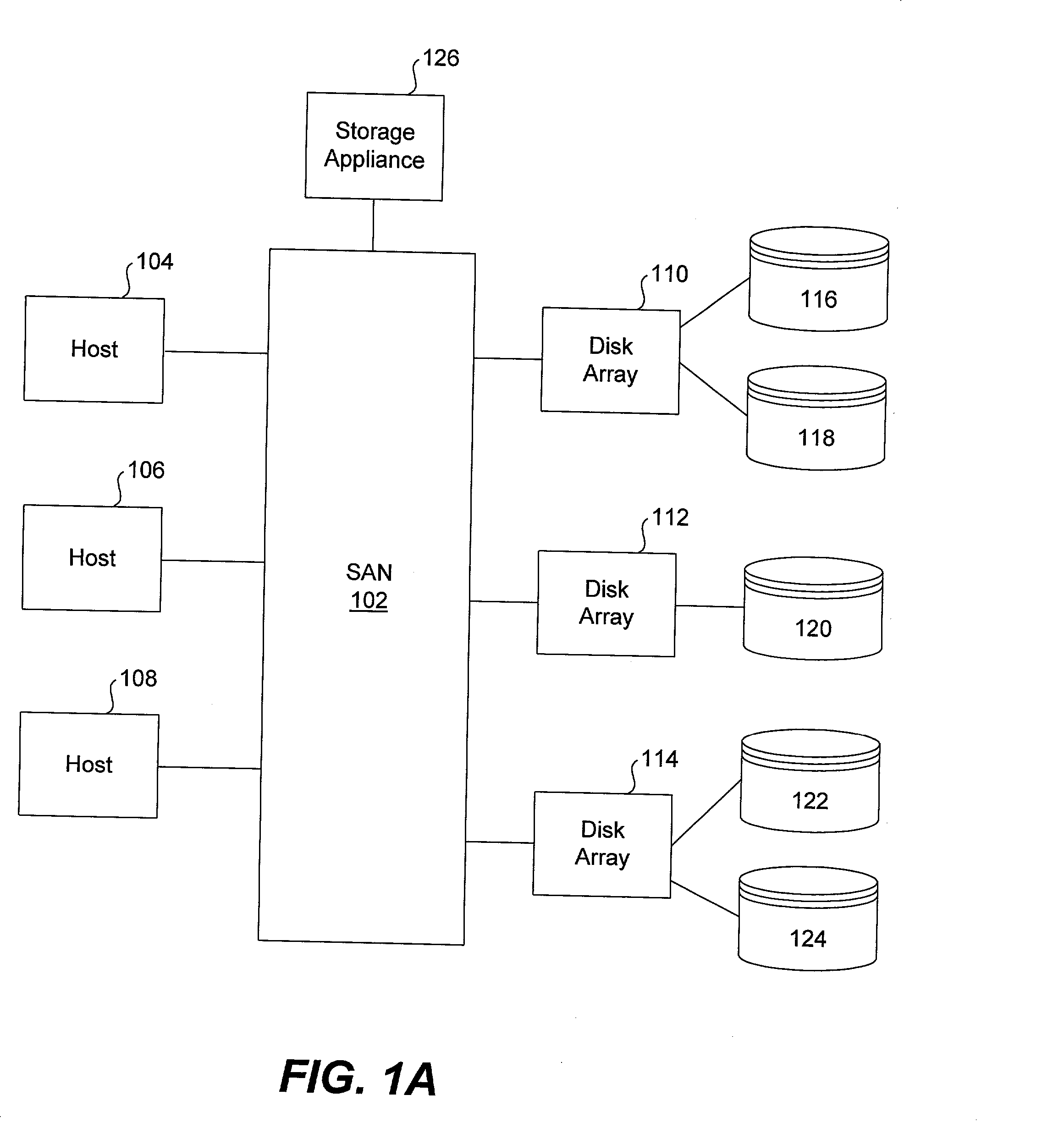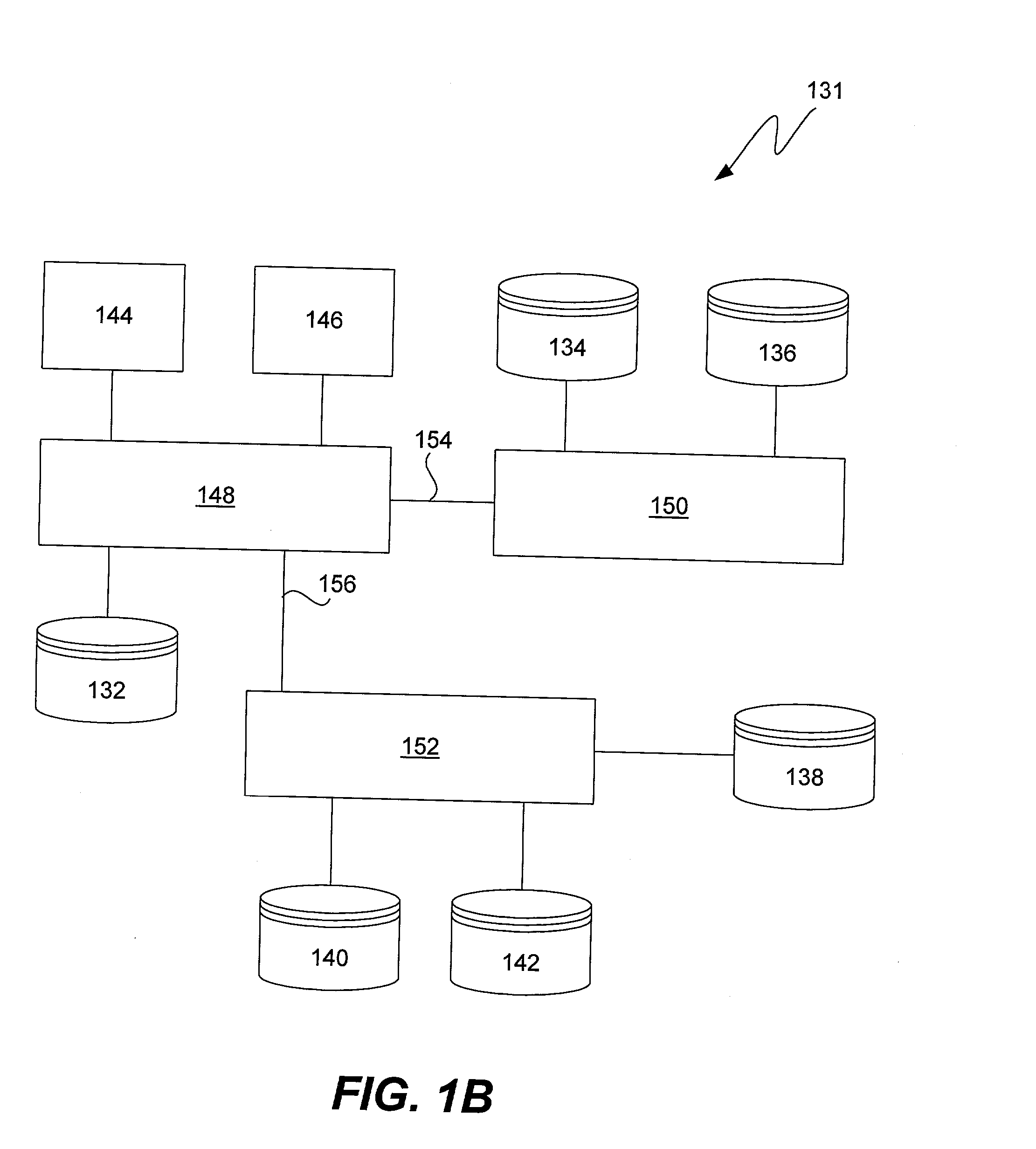Methods and apparatus for implementing virtualization of storage within a storage area network
a storage area network and virtualization technology, applied in the field of network technology, can solve the problems of data storage needs, data storage capacity has not increased as fast, and each of these implementation schemes has undesirable performance limitations
- Summary
- Abstract
- Description
- Claims
- Application Information
AI Technical Summary
Benefits of technology
Problems solved by technology
Method used
Image
Examples
Embodiment Construction
message to the initiator. The SCSI write operation is then complete.
[0071] If the request command specifies a read operation, then the target directly replies with data that has been read from the requested location. A transfer ready signal is not required. When all requested data has been sent, the target replies with a STATUS OK and COMMAND COMPLETE signals. For comparison with the present invention, FIGS. 5 and 6 described below set forth the standard SCSI read and write operations.
[0072] In accordance with this invention, virtualization switches are interposed between targets and initiators (usually storage subsystems and hosts). Virtualization ports on these switches intercept SCSI commands and take certain actions before notifying the initiator or target, as the case may be. FIGS. 7 through 10, described below, show various scenarios by which the virtualization switches handle SCSI commands.
[0073] Generally, in the case of request commands (read or write), the virtualization p...
PUM
 Login to View More
Login to View More Abstract
Description
Claims
Application Information
 Login to View More
Login to View More - R&D
- Intellectual Property
- Life Sciences
- Materials
- Tech Scout
- Unparalleled Data Quality
- Higher Quality Content
- 60% Fewer Hallucinations
Browse by: Latest US Patents, China's latest patents, Technical Efficacy Thesaurus, Application Domain, Technology Topic, Popular Technical Reports.
© 2025 PatSnap. All rights reserved.Legal|Privacy policy|Modern Slavery Act Transparency Statement|Sitemap|About US| Contact US: help@patsnap.com



